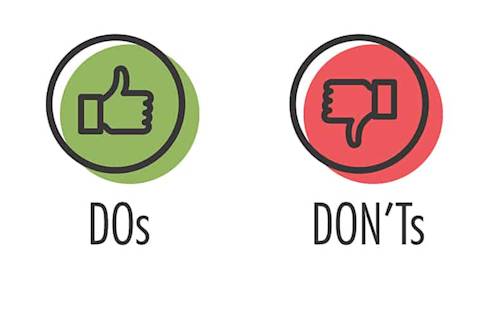Speech analytics has come a long way since its introduction. No longer is it constrained to the walls of traditional quality assurance.
Earlier this year, I sat down with Brian Cantor of Customer Contact Week, Marvie Wright of Qualfon and Chad Schott of HomeAdvisor to discuss how, when used correctly, your speech analytics strategy can use your organization’s objectives to transform legacy call centers into forward-looking value centers. While some behaviors become best practices for implementing an effective customer experience strategy, others can put your organization at risk. With the right technology, companies can see what’s working and which areas of the business need improvement.
Here are a few “do’s and don’ts” to consider when integrating a customer engagement analytics platform to improve every aspect of your business strategy.
Do: Turn your data into actionable insights
If you’re not already capturing every customer experience from beginning to end, you’re missing out on adding business value by limiting yourself to a very small percentage of total interactions. But many organizations are just looking to say they “do speech analytics.”
When it comes to gathering insightful data, it’s not just set it and forget it. Your speech analytics tools are just tools unless you have the knowledge behind it. What you’re really looking for is the ‘why’ behind your scores, so you can take the steps necessary to improve them. That’s where our platform comes into play.
“CallMiner is like an internal analytics GPS. They tell you when you need to turn left, when you need to turn right, and where to take your business,” said Marvie Wright, director of leadership and sales training at Qualfon.
At the end of the day, customer analytics involves a lot more than gathering data—which is why you should be looking for a partner as opposed to a provider. See more about Marvie and her team’s success at Dialog Direct (now Qualfon).
Don’t: Follow the status quo when creating your objectives
There’s no universal objective when it comes to speech analytics. While everyone shares a commonality in that they’re looking to gather customer insights, each company has its own mission statement and unique goals. That’s why you need a platform that is both flexible but comprehensive, so that the user can be the acting force behind it.
It’s also important to remember that if you wanted it to, your technology could do a million things. While this opens the door to infinite opportunity, it also makes it easy for your organization to lose its way in the process. CallMiner helps identify individual, customized benchmarks tailored to the needs of your organization, and grows alongside your business.
Do: Educate beyond your business intelligence teams
One of the key elements to any successful long-term solution is internal education — which holds especially true for any customer experience platform. Real-time data and actionable insights can only do so much if all relevant parties are not onboard.
Getting adequate support for technology and initiatives requires strong communication across departments. Wright, for example, emphasized the importance of keeping the entire organization in the loop. “Everyone has to be on the same page, so the outcomes can stay as rapid as the technology,” she explained. She also noted that one of the key areas that customer analytics helped her organization was through improving onboarding using speed-to-readiness metrics—which wasn’t even included in the original strategy. Her goal now is to expand the technology throughout the entirety of the company.
Don’t: Fall victim to tunnel vision
I spoke with Chad and Brian about a customer that came to us convinced their average handle times (AHTs) needed to be lower. Come to find out that, after benchmarking, their most successful calls resulting in the best sales results, least cancellations and highest compliance ratings, were 3.5 times longer. There have been many cases like these, where customers come in thinking they’re looking for something, just to discover they’ve been analyzing the wrong thing all along.
As hard is it may be—strategic developers need to break the self-affirmation cycle. Sometimes the data is going to show you that you’re wrong, but on the flipside, will show you what you should be doing instead.
Through speech analytics technology, you have the ability to uncover things that people normally aren’t thinking of, and then quantify the value to uncover new opportunities and create sustainable revenue. But in order to so, you have to think outside the box and be willing to accept that data, even when it doesn’t conform to your expectations.
Over the past few years, there’s been a huge shift in the industry’s willingness to even have the conversation around technology as a business intelligence asset—but it’s time to take it even further. Not only are we using speech analytics to capture 100 percent of our interactions, we’re looking to turn those interactions into actionable insights that will improve customer and employee experience and ultimately enhance business value.
To listen to the full conversations, visit the CCW Digital website.
We hope to see you at next workshop and booth at Customer Contact Week June 24-28, 2019 in Las Vegas.





